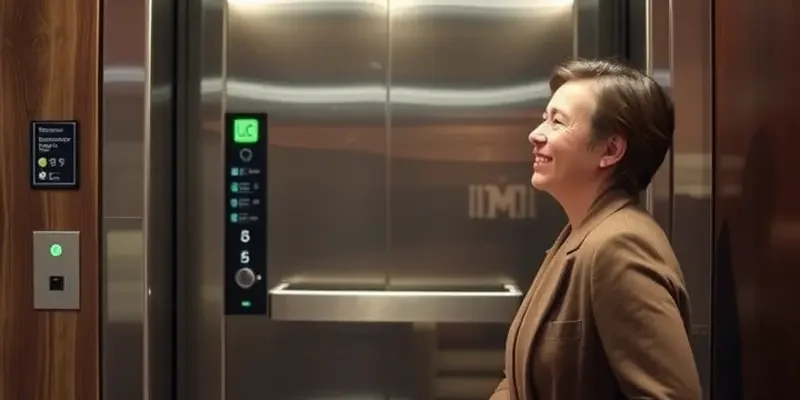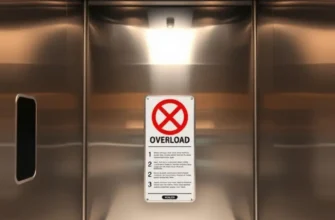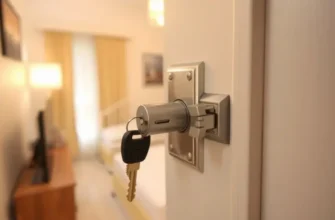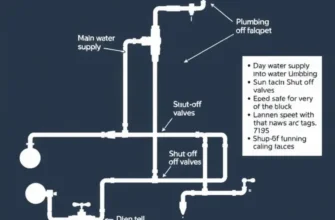Apartment living often comes with reliance on elevators to access different floors. While they are a convenient feature, safety should always be a top priority for renters. An elevator malfunction can lead to accidents or even entrapment, which understandably causes concern. Understanding basic elevator safety protocols can help renters feel empowered, secure, and informed. Furthermore, knowing how to address elevator issues with your building management can ensure timely resolutions and minimize disruptions. This guide will delve into essential safety tips and maintenance strategies that not only protect you but also foster a safe living environment for all residents. By following these practical steps, you will promote a culture of safety and cooperation within your community, thereby enhancing your overall apartment experience.
Understanding Elevator Safety Protocols

Navigating elevator safety protocols is crucial for every renter. Proper usage ensures not only personal safety but also contributes to the well-being of others living in your apartment building. Let’s delve into the steps to maintain optimum elevator safety.
Entering and Exiting:
Before stepping into the elevator, it’s essential to wait for the doors to open fully. Attempting to enter while the doors are still in motion can lead to accidents or malfunctions. Once the elevator arrives, allow exiting passengers to disembark first. This keeps the flow smooth and prevents congestion.
Be Mindful of the Elevator Shaft:
While it’s uncommon, accidental falls in elevator shafts can occur. Ensure children are supervised when near elevators, and never lean over or place objects beyond the threshold. It’s crucial to maintain an appropriate distance from the edge while waiting.
In Case of Emergencies:
Knowing what to do in an emergency can make a significant difference. Should the elevator stop between floors, remain calm. Avoid attempting to force the doors open. Instead, use the emergency button to alert building management or emergency services. Elevators are equipped with communication systems intended for these instances.
Power Outages and Breakdowns:
In the event of a power outage, remain patient. Modern elevators have emergency lighting and systems that keep the cabin secure. They are designed to handle such situations, and forcing the doors can compromise your safety. It’s always advised to stay put, avoid panic, and wait for assistance.
Etiquette for Overall Safety:
Practicing good elevator etiquette enhances safety. Refrain from blocking the doors with your body or belongings. Avoid overcrowding by waiting for the next car if the elevator is full. Furthermore, don’t press multiple buttons unnecessarily, as this can lead to wear and unnecessary stops, frustrating for everyone involved.
Additionally, if you’re ever dealing with large items, consider using the service elevator, if available. This prevents damage to the passenger elevator and reduces risks associated with navigating bulky objects in confined spaces.
Handling Unexpected Situations:
Elevator mishaps, though rare, can happen. It’s wise to prepare for unforeseen circumstances. Keep essential contacts, such as building maintenance or a nearby friend, readily available in your phone. Regularly check notices in the lobby for elevator maintenance schedules to avoid riding during potential disruptions.
To further enhance your apartment living experience, consider familiarizing yourself with comprehensive safety habits like these safe apartment laundry habits. Understanding these best practices can provide additional layers of security in all facets of apartment life.
In summary, being aware and prepared makes elevator use both safer and more efficient. Following these protocols not only ensures your own safety but demonstrates consideration for fellow residents, creating a harmonious living environment for everyone.
Communicating with Management on Elevator Issues

In any multi-story apartment building, elevator maintenance is a crucial aspect of ensuring resident safety and convenience. Effective communication with building management about elevator issues can be pivotal in maintaining high safety standards.
When you notice something amiss with the elevator, it is essential to report it promptly. Unusual noises, such as grinding or rattling, could indicate mechanical problems needing immediate attention. Likewise, malfunctioning doors that hesitate to close or open can be not only inconvenient but also dangerous.
Start by documenting the specific issues. When you notice an inconsistency in the elevator’s levels or if the doors do not align properly with the floor, make a note of it. Providing details such as the time, frequency, and nature of these occurrences will help management and maintenance teams address the issues effectively.
Once you have the details, reach out to your building management through the preferred communication channels. It’s often useful to email or use a tenant portal if available, as this provides a written record of your communication. Highlight any specific observations and suggest potential risks involved.
Tenant safety should be a priority for any building management team. Thus, suggesting regular inspection and maintenance schedules can foster a safer environment for everyone. Propose inspections at intervals recommended by the elevator manufacturer or as outlined in local safety regulations.
In advocating for regular maintenance, emphasize the importance of preventative care in avoiding costly repairs and ensuring reliable performance. Proactive measures not only maintain safety standards but also enhance the overall living experience in the building.
Furthermore, collaborate with other residents to convey a unified message if elevator problems persist. A collective voice can often motivate management to address issues more swiftly. Keeping fellow tenants informed about ongoing communications with management ensures that everyone is aware of the situation and can take any necessary precautions.
Remember, proactive engagement with management is key in ensuring that any potential risks associated with elevator use are minimized. By taking a systematic and collaborative approach, residents can help create a more secure and pleasant living environment.
For additional tips on maintaining safety in your apartment, consider exploring safe apartment laundry habits, which can complement your efforts to uphold high safety standards throughout your building.
Final words
Elevator safety should never be taken for granted, especially in apartment living. By understanding and adhering to safety protocols, as well as communicating effectively with management regarding maintenance issues, you can contribute significantly to a safer living environment for all tenants. Prioritize your safety and that of your neighbors by following these essential tips. Remember, a well-maintained elevator not only ensures hassle-free access but also fosters a community where everyone feels secure and respected.









